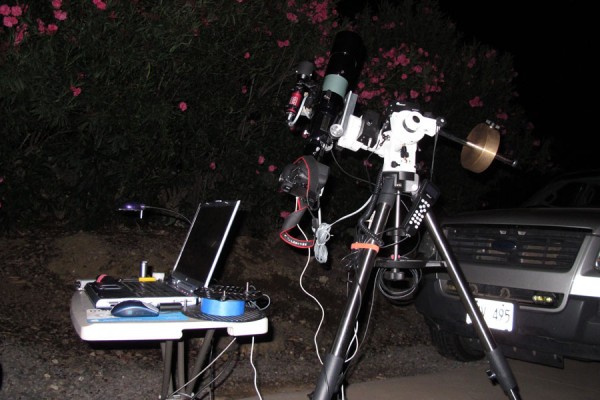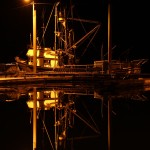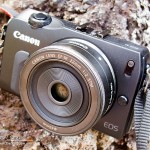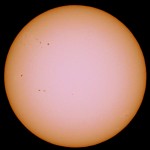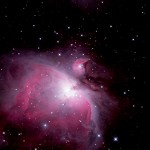The current astrophoto setup in the driveway… The TeleVue 76mm atop the iOptron ZEQ-25 mount. The camera is currently the Canon 6D, providing a 5.35° x 3.57° field of view with a 3.52 arcsecond per pixel image scale.
Atop the main scope an SBIG STi provides auto-guiding. With a 100mm lens it has a 15 arc-second per pixel image scale. It is mounted with a custom mount machined for this setup.
The setup is intended to provide a high performance astrophoto setup with a minimum of fuss. This is about as far as I can reduce things without giving up performance. It is pretty portable, airline luggable at least. The whole setup fit in two suitcases for the trip to Oregon Star Party last summer.
The only real issue with this setup is the laptop. The big old 17″ HP Pavalion chews a lot of power, requiring an AC outlet to supply. I have my little Asus netbook configured to run the setup, a far more power efficient machine. With the netbook I can setup anywhere and shoot.
Cable management is a bit of a chore. A lot of separate cables must be routed to connect everything together. Much of the time I keep the setup assembled in the garage for deployment in the driveway. The cable tangle can be tamed with a handful of zip ties and velcro strips this way. A wheeled dolly allows the entire setup to be rolled out of the garage.
With this setup I have a capable astrophoto rig, capable of producing very nice material for processing. I just need a chance to get out and use it more often.
